Board of Trustees meetings at El Batán
The bi-annual Board of Trustees (BoT) meeting commenced at CIMMYT headquarters at El Batán on 31 March 2012. In his opening report to the board, Director General Thomas Lumpkin described developments at CIMMYT over the past 6 months. “Our stature is rising. Our capacity is rising. But the challenges we are facing—especially taking into consideration climate change and population increases—are just daunting,” he said.
This session of meetings was the first chaired by Sara Boettiger, who has served on the BoT for the past eight years, and took over the position of Board Chair from Julio Antonio Berdegué Sacristán in October 2011. Boettiger, originally from the US, also serves as an Adjunct Professor at UC Berkeley in the Department of Agricultural and Research Economics.
During the meetings, Boettiger applauded CIMMYT’s “reputation for professionalism from our partners and collaborators.” CIMMYT’s funding strategy was also highlighted as forward thinking and innovative. Rather than the traditional model of investment from industrialized nations such as the US, Germany, and the UK, CIMMYT has undergone a shift in its funding in the past 5 years, with the largest proportion of funding currently sourced from emerging market countries.
During a summary report to CIMMYT staff on 04 April 2012, Boettiger stated, “globally, emerging markets are going to be the strength of the world. These will be the powerhouses funding agricultural development.” Recent reports show that half of the world’s GDP comes from emerging markets. They also produce a third of the world’s exports and are home to 85 percent of the world’s population. In recent years, CIMMYT has made a concerted effort to strengthen linkages with emerging market countries such as India, where CIMMYT launched the newly established Borlaug Institute for South Asia (BISA) in October 2011, as well as China where CIMMYT currently has the largest research capacity of any of the CGIAR centers.
Upcoming events were also discussed during the meetings, including the G20 in Mexico, and the impending visit to CIMMYT of the CGIAR’s new CEO, Frank Rijsberman, who will come in June after representing the CGIAR at Rio+20.
During the four-day meeting, BoT members had their first opportunity to tour the construction sites and new facilities being developed at CIMMYT headquarters. The project—which is to include new biotechnology buildings, labs, greenhouses, and housing facilities—will conclude later this year and an event to officially inaugurate the facilities is set to take place by 2013.
The next BoT meeting will take place in October 2012.
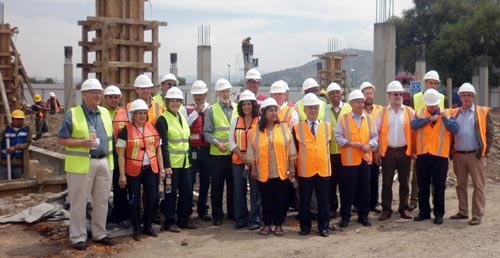
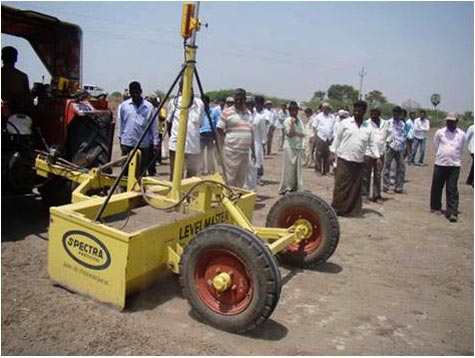 Discussions covered laser leveling, direct-seeded rice, zero-till maize, conservation agriculture machinery, the turbo seeder for residue management, weed management, pest management, cultivar choices, potential diversification options using resource-conserving technologies, and the potential for diversification and the adoption of water-wise practices to make more efficient and productive use of irrigation water. The operation and benefits of conservation agriculture machinery, including the laser land leveler, zero-till multi-crop planter, and turbo seeder, were demonstrated and explained. Farmers who have adopted the technologies shared their views and encouraged others to adopt.
Discussions covered laser leveling, direct-seeded rice, zero-till maize, conservation agriculture machinery, the turbo seeder for residue management, weed management, pest management, cultivar choices, potential diversification options using resource-conserving technologies, and the potential for diversification and the adoption of water-wise practices to make more efficient and productive use of irrigation water. The operation and benefits of conservation agriculture machinery, including the laser land leveler, zero-till multi-crop planter, and turbo seeder, were demonstrated and explained. Farmers who have adopted the technologies shared their views and encouraged others to adopt.
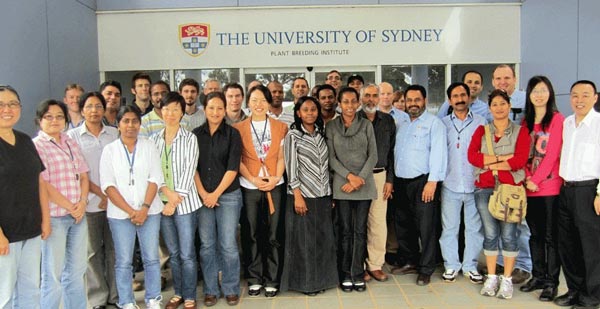
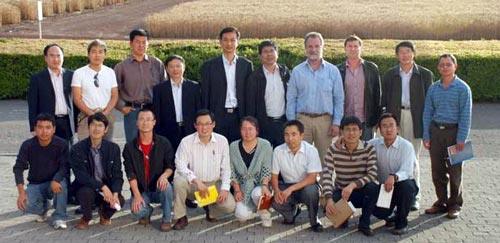
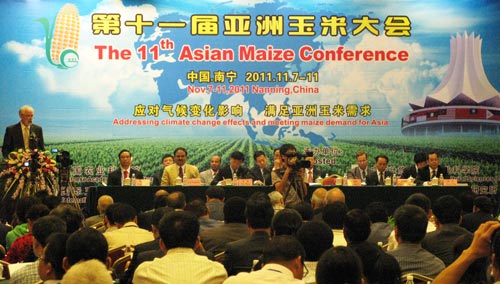

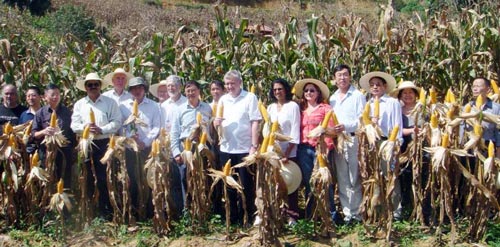
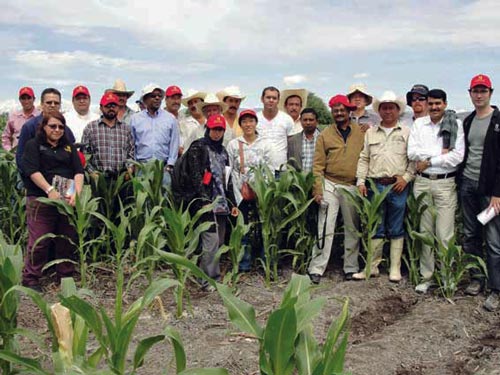 “It is very difficult to find conservation agriculture machinery. You have to go to China or India to get it,” said Mahesh Kumar Gathala, new CIMMYTBangladesh-based cropping systems agronomist for South Asia. Gathala, a native of India, was just one of the 15 participants invited to attend a five-week conservation agriculture course at CIMMYT-El Batán, Mexico, where improving machinery and professional capacity were hot topics.
“It is very difficult to find conservation agriculture machinery. You have to go to China or India to get it,” said Mahesh Kumar Gathala, new CIMMYTBangladesh-based cropping systems agronomist for South Asia. Gathala, a native of India, was just one of the 15 participants invited to attend a five-week conservation agriculture course at CIMMYT-El Batán, Mexico, where improving machinery and professional capacity were hot topics. The Chinese Academy of Engineering honored Zhonghu He, principal scientist of CIMMYT’s Global Wheat Program and China country representative, for his work with wheat quality improvement and promotion of China-CIMMYT collaboration. Zhonghu received the Guanghua Award in a ceremony on 09 June 2010 in Beijing. Established in 1996, this award recognizes Chinese scientists who have made signification contributions in applied science and management. To date, only eight scientists with agriculture or forestry backgrounds have received the Guanghua Award.
The Chinese Academy of Engineering honored Zhonghu He, principal scientist of CIMMYT’s Global Wheat Program and China country representative, for his work with wheat quality improvement and promotion of China-CIMMYT collaboration. Zhonghu received the Guanghua Award in a ceremony on 09 June 2010 in Beijing. Established in 1996, this award recognizes Chinese scientists who have made signification contributions in applied science and management. To date, only eight scientists with agriculture or forestry backgrounds have received the Guanghua Award.